-
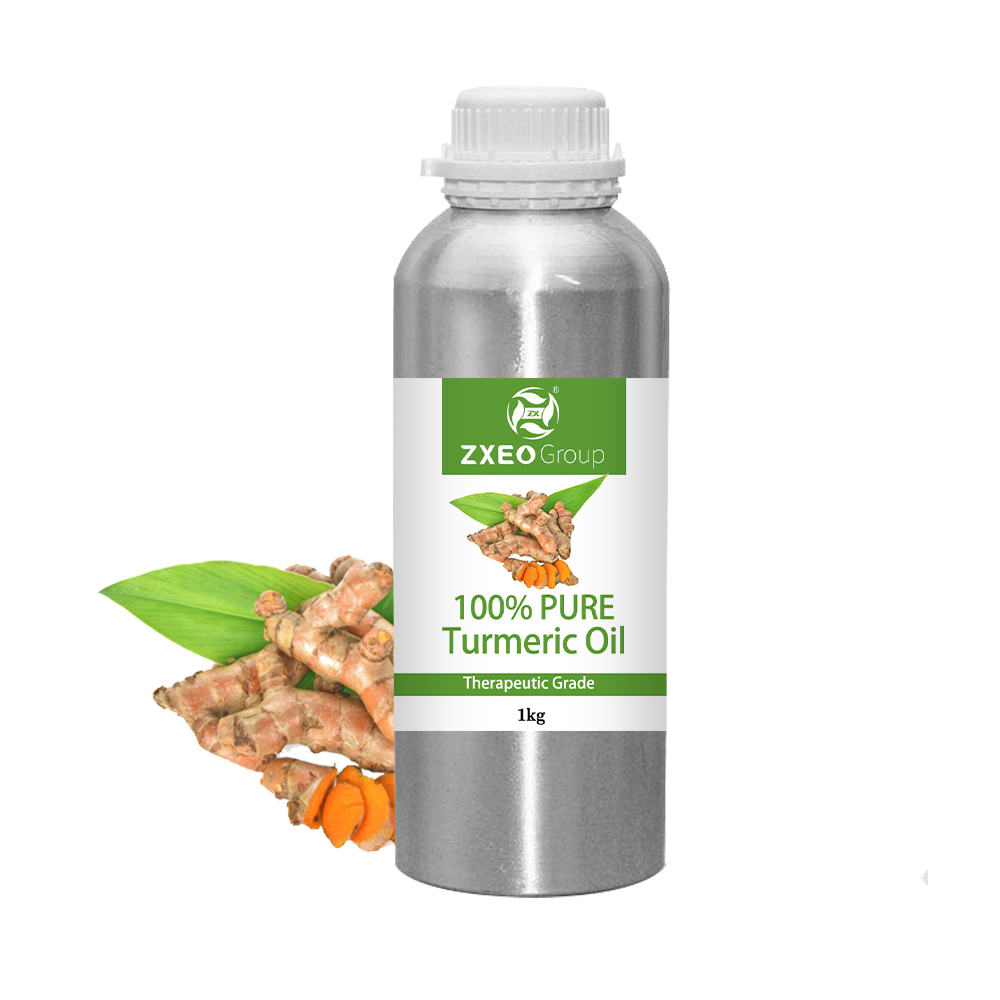
Custom Natural Organic Whitening Anti-Aging lighten spots Essential Oil Turmeric Facial Face Oil
Turmeric oil is derived from turmeric, which is well-known for its anti-inflammatory, antioxidant, anti-microbial, anti-malarial, anti-tumor, anti-proliferative, anti-protozoal and anti-aging properties. (1) Turmeric has a lengthy history as a medicine, spice and coloring agent. Turmeric essential oil is an extremely impressive natural health agent just like its source — one that appears to have some of the most promising anti-cancer effects around. (2)
Turmeric benefits also come from its health-promoting vitamins, phenols and other alkaloids. Turmeric oil is considered to be a strong relaxant and balancer to the body. According to Ayurvedic medicine, this incredible herbal remedy is meant to support the imbalance of Kapha body type.
Given all of these beneficial components, it’s no surprise turmeric essential oil has been shown to hold the following health benefits.
-

Supply pine oil 50% 85%
Pine Essential Oil Uses
- Diffuse Pine Essential oil to promote relaxation, reduce stress, and boost mental clarity.
- Dilute and topically apply a couple drops of pine oil to areas of acne with a cotton ball to help soothe dry skin.Dilute and massage pine oil into inflamed or aching areas to boost blood circulation and reduce inflammation and pain.
- Need more essential oil recipes for acne? Check out our Best Essential Oils for Acne here!
- Add a couple drops of pine essential oil to your DIY cleaner to clean surfaces and purify your home.
- Pine essential oil can also be used to clean and preserve wood furniture and floors, and it can also help repel pests like termites and moths.
-

Natural Organic Plant Mosquito Repellent Lemon Eucalyptus Essential Oil 100% Pure Lemon Eucalyptus Oil
Geographical sources
Although large quantities of lemon eucalyptus essential oil were distilled in Queensland during the 1950’s and 1960’s, very little of this oil is produced in Australia today. The largest producing countries are now Brazil, China and India, with smaller quantities originating from South Africa, Guatemala, Madagascar, Morocco and Russia.
Traditional uses
All species of eucalyptus leaves have been used in traditional Aboriginal bush medicine for thousands of years. Infusions made of lemon eucalyptus leaves were taken internally to reduce fevers and ease gastric conditions, and applied externally as a wash for the analgesic, anti-fungal and anti-inflammatory properties. Aborigines would make leaves into a poultice and apply them to ease joint pain and speed up the healing of cuts, skin conditions, wounds and infections.
Respiratory infections, colds and sinus congestion were treated by inhaling the vapours of steamed leaves, and to treat rheumatism the leaves were made into beds or used in steam pits heated by fire. The therapeutic qualities of the leaves and its essential oil were eventually introduced and integrated into many traditional medicine systems, including Chinese, Indian Ayurvedic and Greco-European.
Harvesting and extraction
In Brazil, leaf harvesting may take place twice a year, whereas most of the oil produced in India comes from smallholders who harvest leaves at irregular times, mostly depending on convenience, demand, and oil trading prices.
After collection, the leaves, stems and twigs are sometimes chipped before quickly loading into the still for extraction by steam distillation. Processing takes approximately 1.25 hours and delivers a yield of 1.0% to 1.5% of a colourless to pale straw coloured essential oil. The odour is very fresh, lemon-citrus and somewhat reminiscent of citronella oil (Cymbopogon nardus), due to the fact that both oils contain high levels of the monoterpene aldehyde, citronellal.
Benefits of lemon eucalyptus essential oil
Lemon eucalyptus essential oil is powerful fungicidal and bactericidal, and is most commonly used to obtain relief from a wide range of respiratory conditions such as asthma, sinusitis, phlegm, coughs and colds, as well easing sore throats and laryngitis. This makes it a highly valuable oil at this time of year when viruses are on the increase, plus its delightful lemony aroma is much nicer to use than some other antivirals such as tea tree.
When used in an aromatherapy diffuser, lemon eucalyptus oil has a reviving and refreshing action that uplifts, yet is also calming to the mind. It also makes an excellent insect repellent and can be used alone or in blends with other respected insect repellent essential oils such as citronella, lemongrass, cedar atlas etc.
It is a powerful fungicidal and bactericidal that has been scientifically evaluated many times against a wide range of organisms. In 2007, the antibacterial activity of Lemon eucalyptus essential oil was tested against a battery of clinically important bacterial strains at the Phytochemical Pharmacological and Microbiological Laboratory in India, and was found to be highly active against Alcaligenes fecalis and Proteus mirabilis, and active against Staphylococcus aureus, Escherichia coli, Proteus vulgaris, Salmonella typhimurium, Enterobacter aerogenes, Pseudomonas testosterone, Bacillus cereus, and Citrobacter freundii. Its efficacy was found to be comparable to the antibiotics Piperacillin and Amikacin.
Lemon-scented eucalyptus oil is a top note and blends well with basil, cedarwood virginian, clary sage, coriander, juniper berry, lavender, marjoram, melissa, peppermint, pine, rosemary, thyme and vetiver. In natural perfumery it can be used successfully to add a fresh, slightly citrusy-floral top note to blends, but use it sparingly as it is very diffusive and easily dominates in blends.
-
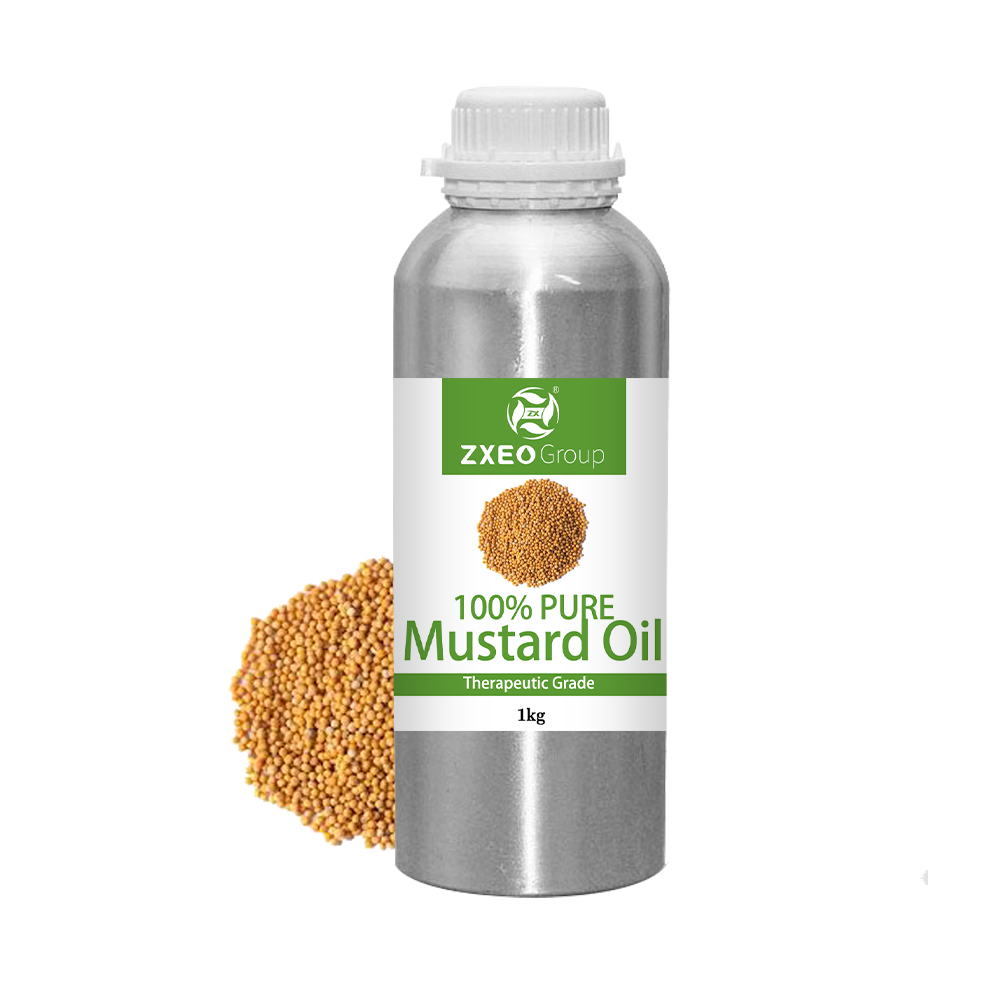
Mustard Poudre De Wasabi Pure Wasabi Oil Price Of Wasabi
It’s true that real wasabi provides a range of health benefits, but how do you know that you’re eating the real thing? Interestingly, this Asian superfood you’ve eaten may actually be a fake. Instead, it’s likely a good substitute containing horseradish root, mustard and a little food coloring. Even in Japan, where it’s derived, getting the real thing may be a challenge.
It’s also common to see European horseradish as wasabi’s replacement in many culinary dishes. Why? A few reasons lead to this. One is that horseradish still provides that nasal vapor, even if kept overnight, whereas the pungency of real wasabi only lasts for about 15 minutes. This is why it’s best to grate it as you need it. Ideally, you would have your rhizome and your own grater at a restaurant so you get it as fresh as possible.
The flavor is greatly affected by how finely it’s grated. Traditionally, the best way to grate wasabi is by using a sharkskin grater, called an oroshi, which resembles fine sandpaper.
So why are we getting the wasabi runaround? It provides challenges due to the difficulty in its cultivation process. Because of this, some companies opt for growth and production using greenhouses. They produce and sell fresh and freeze-dried wasabi rhizomes, jars and tubes of wasabi paste, powder and other condiments flavored with wasabi. For all you sushi lovers out there, you may be able to get the real thing soon.
So how do you know if you have real wasabi? Of course, you can do a little research and ask if you’re trying to seek a true wasabi menu. True wasabi is known as Sawa wasabi, and it’s usually treated as a delicacy. It also tastes more herbal than the horseradish, and while it’s hot, it doesn’t have the lingering, burning aftertaste that you may be used to with the imposter. It tastes smoother, cleaner, fresher, and more plant-like or earthy than horseradish.
Why do we eat wasabi with sushi? It’s meant to accentuate the delicate taste of fish. The taste of real wasabi enhances the taste of sushi, while some argue that the taste of “fake wasabi” is actually too strong for delicate fish and overpowers sushi. You wouldn’t get that “my mouth is on fire” feeling from the real thing.
-
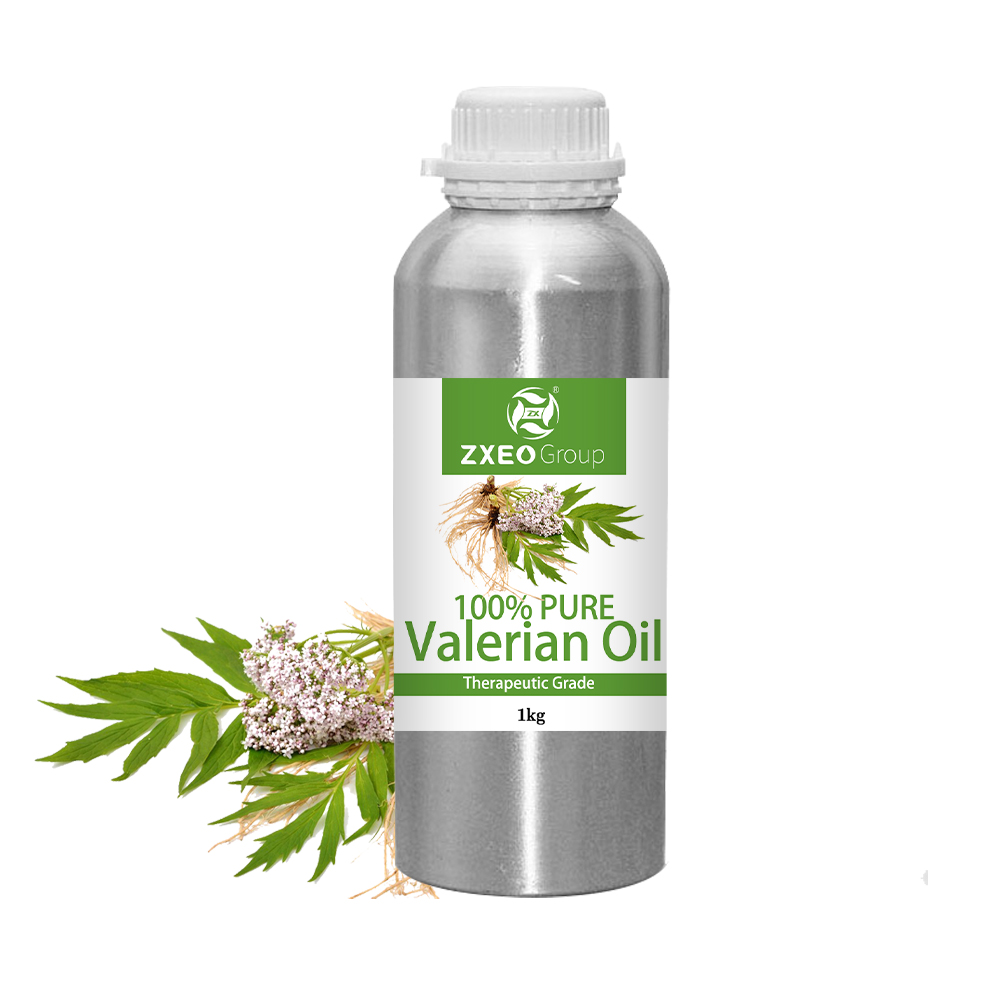
Factory Provide Best Valerian Essential Oil for Aromatherapy Bulk Price Valerian Oil
Health Benefits of Valerian Essential Oil
Treats Sleep Disorders
One of the oldest and most studied benefits of valerian essential oil is its ability to treat the symptoms of insomnia and improve the quality of sleep. Its many active components coordinate an ideal release of hormones and balances the body’s cycles to stimulate restful, thorough, undisturbed sleep. This has been one of the main uses of valerian root since ancient times. [3]
Lowers Anxiety & Depression
This is somewhat related to the previous point about sleep disorders, but valerian essential oil is also widely used to improve mood and reduce anxiety. The same mechanism of action that enables healthy sleep also help to reduce the negative energy and chemicals in the body that can induce anxiety and stress. These stress hormones can be dangerous when chronically in the body, so valerian essential oil can help you rebalance your body and increase your peace and calm. [4]
Improves Stomach Health
When you have an upset stomach, many people turn to pharmaceutical solutions, but natural solutions are often best for gastrointestinal problems. Valerian essential oil can quickly ease upset stomachs and induce healthy bowel movements and urination. This can help to detoxify the body and improve the nutrient absorption of the gastrointestinal tract, thereby improving health in numerous ways. [5]
Prevents Heart Palpitations
Valerian Essential oil has been directly linked to a lower occurrence of heart palpitations in certain study subjects. The volatile compounds in this essential oil interact with the acids and oils in your heart to stimulate a more normal metabolic rate and calm down erratic behavior of your cardiovascular system. [6]
Skin Care
In terms of maintaining your skin health, topical or internal application of valerian essential oil can be an unexpected ally. Valerian essential oil is able to infuse the skin with a healthy blend of protective oils that protect against the development of wrinkles and also functions as an antiviral barrier that helps keep you healthy. [7]
Regulates Blood Pressure
The same active ingredients that make valerian root so helpful for stress and anxiety also help the body regulate its blood pressure. High blood pressure can cause unnecessary strain on the cardiovascular system and increase the chances of strokes and heart attacks. Valerian essential oil can naturally reduce these risks through internal consumption. [8]
Improves Cognitive Abilities
Although many essential oils claim to positively affect cognitive ability, valerian root has been heralded as a brain booster for hundreds of years. It stimulates different areas of the brain and increases circulation, stimulating pathways that keep our brains fresh and active. Students and elderly people consume valerian root all over the world for increasing their academic performance, as well as to protect their memory and delay any cognitive disorders, like dementia. [9]
Reduces Menstrual Cramps
The relaxing nature of valerian essential oil has made it a popular part of pregnancy and menstrual therapy for many years. It can reduce the severity and discomfort of menstrual cramps, which is a welcome relief to many women who suffer through menstruation cramps, as well as discomfort and pain during pregnancy. [10]
A Final Word of Warning
Generally, there are no negative side effects of consuming valerian essential oil. However, since there are a number of powerful, volatile components in valerian essential oil, you don’t need much to experience the effects. Excessive consumption of valerian essential oil can result in dizziness, cramps, stomachaches, mild depression, and occasionally as a skin rash or hives. These are very limited occurrences, and as long as you follow your medical professional’s guidance, your use of valerian essential oil can do very little harm – but plenty of good!
-

Organic Pure Plant Ho Wood Essential Oil for Aroma Diffuser Massage
Benefits
Peaceful and soothing. Uplifting for the spirits. Cooling on the skin when combined with a carrier oil and applied topically.
Uses
Bath & Shower
Add 5-10 drops to hot bath water, or sprinkle into shower steam before getting in for an at-home spa experience.Massage
8-10 drops of essential oil per 1 ounce of carrier oil. Apply a small amount directly to areas of concern, such as muscles, skin or joints. Work the oil gently into the skin until it is fully absorbed.Inhalation
Inhale the aromatic vapors directly from the bottle, or place a few drops in a burner or diffuser to fill a room with its scent.DIY Projects
This oil can be used in your homemade DIY projects, such as in candles, soaps, and body care products! -

Pure Top Therapeutic Grade Black Spruce Essential Oil For Skin Care
Benefits
Refreshing, calming and balancing. Helps soothe nerves and process pent-up emotions. Promotes a sense of clarity, making it a favorite for meditation.
Spruce essential oil has antiseptic properties, making it useful for cleansing the skin, killing bacteria and fungi and healing skin wounds.
Uses
Wake Up Your Commute
The fresh scent of spruce oil is invigorating and energizing to the mind and body. Try using it in car diffuser or wearing topically to promote alertness during a long drive or an early morning commute.
Release Emotional Blockages
Spruce oil is a favorite to use during meditation. It helps develop intuition and connectedness and is instrumental in releasing stagnant emotions. It also aids in finding inspiration, deepening spirituality, and strengthening trust.Beard Serum
Spruce essential oil is conditioning for hair and can soften and smooth coarse hair. Men love using spruce oil in this smoothing beard. -
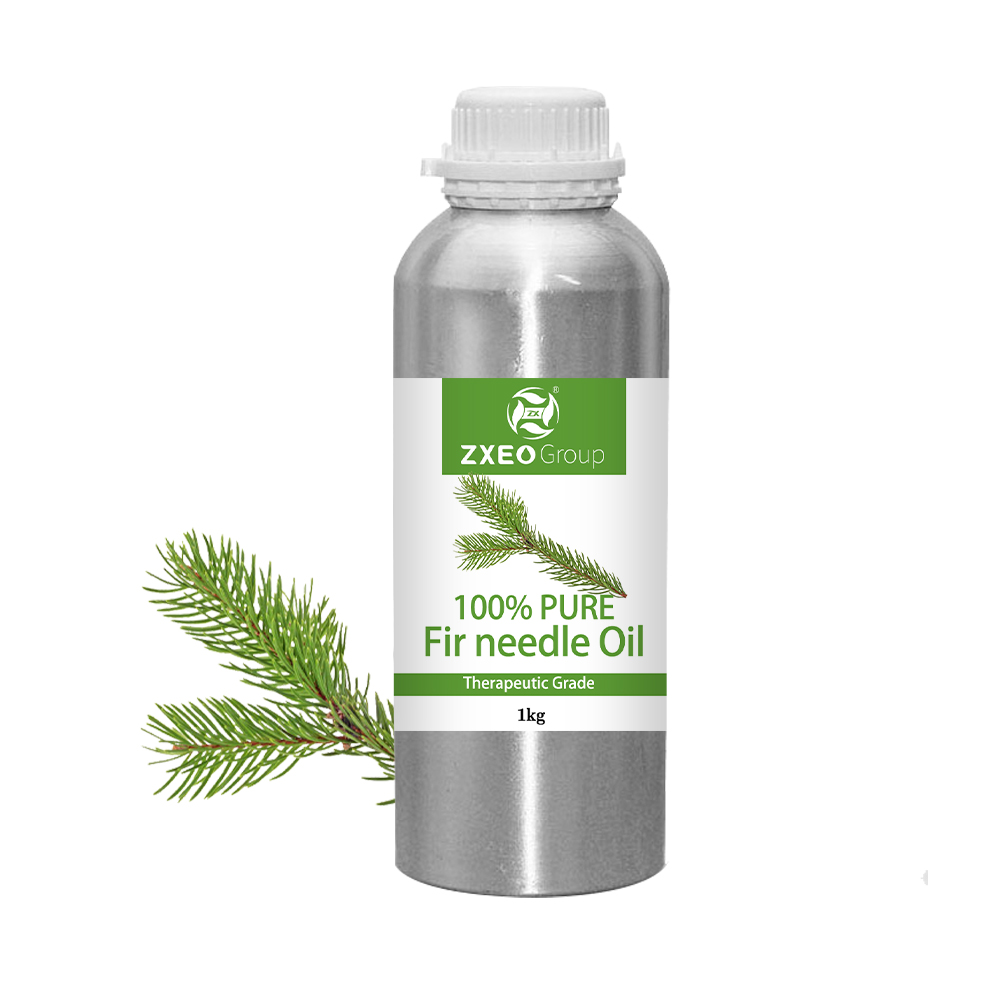
Hot Selling Essential Oils Fir Siberian Needle Oil for Aroma & Cosmetics Purposes Organic Certified Oils
People have known about the benefits of fir essential oil for many years now, with records revealing that the Ancient Egyptians used it as a hair tonic. That means it has been helping us for 5000+ years! In modern times, its most common advantages include:
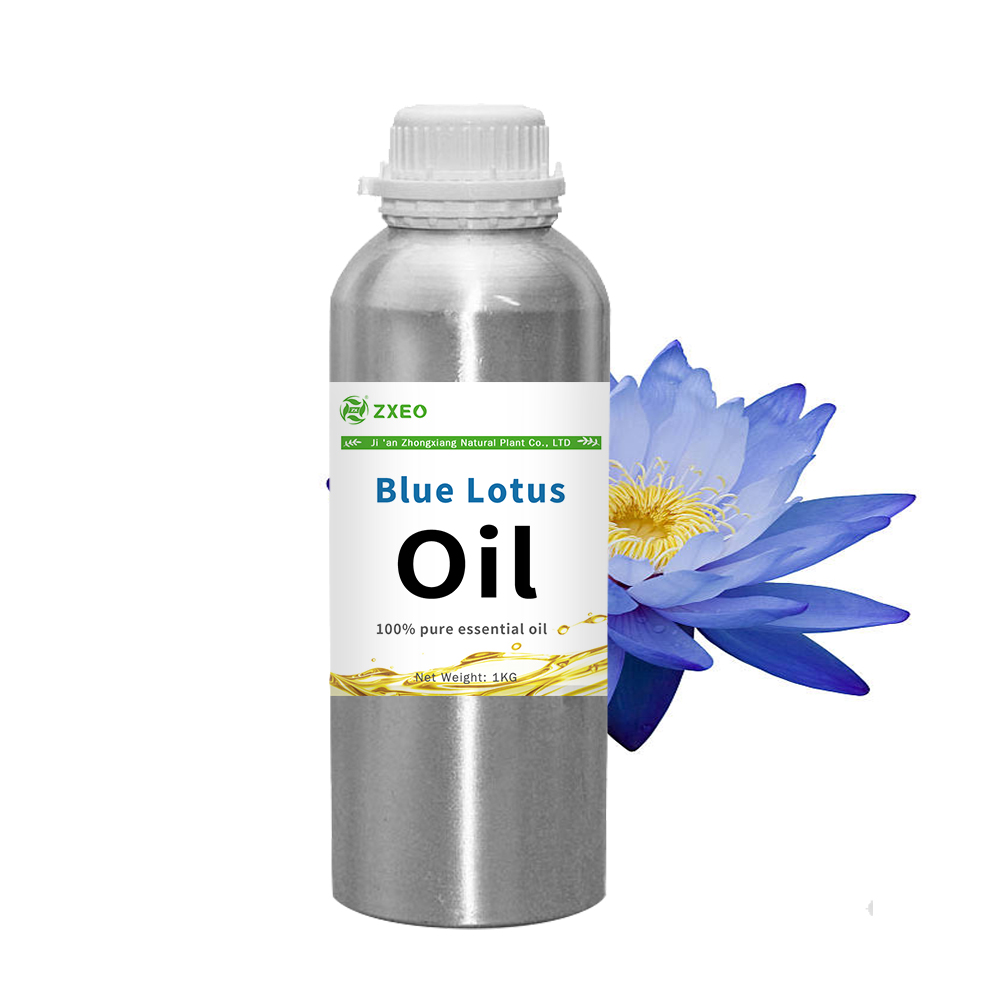
Best Selling Pure Natural Plant Blue Lotus Essential Oil For Skin
Benefits
Spiritual Purposes
Many people believe to reach a state of sublime meditation after inhaling blue lotus oil. Blue lotus oils widely used for spiritual purposes and to make the ambiance peaceful during religious ceremonies.Enhances Libido
Refreshing scent of Pure Blue Lotus Oil proves to be effective for enhancing libido. It creates a romantic environment in your room when diffused. Use it as an aphrodisiac.Reduces Inflammation
Our Pure Blue Lotus Essential Oil can be used to treat skin burns and inflammation due to its anti-inflammatory properties. Blue lotus oil soothes your skin and provides relief from the burning sensation immediately.Uses
Sleep Inducer
Someone who is facing issues of lack of sleep or insomnia can inhale blue lotus essential oil before going to bed to enjoy a deep slumber. Sprinkling a few drops of water lily oil on your bed and pillows might also provide similar benefits.Massages Oil
Mix a couple of drops of organic blue lotus essential oil in a carrier oil and massage it on your body parts. It will boost the blood circulation in the body and make you feel light and energetic.Improves Concentration
If you are not able to concentrate on your studies or work then you can pour a few drops of blue lotus oil in a tub of hot water and inhale it. This will clear your mind, relax your mind, and boost your concentration levels as well.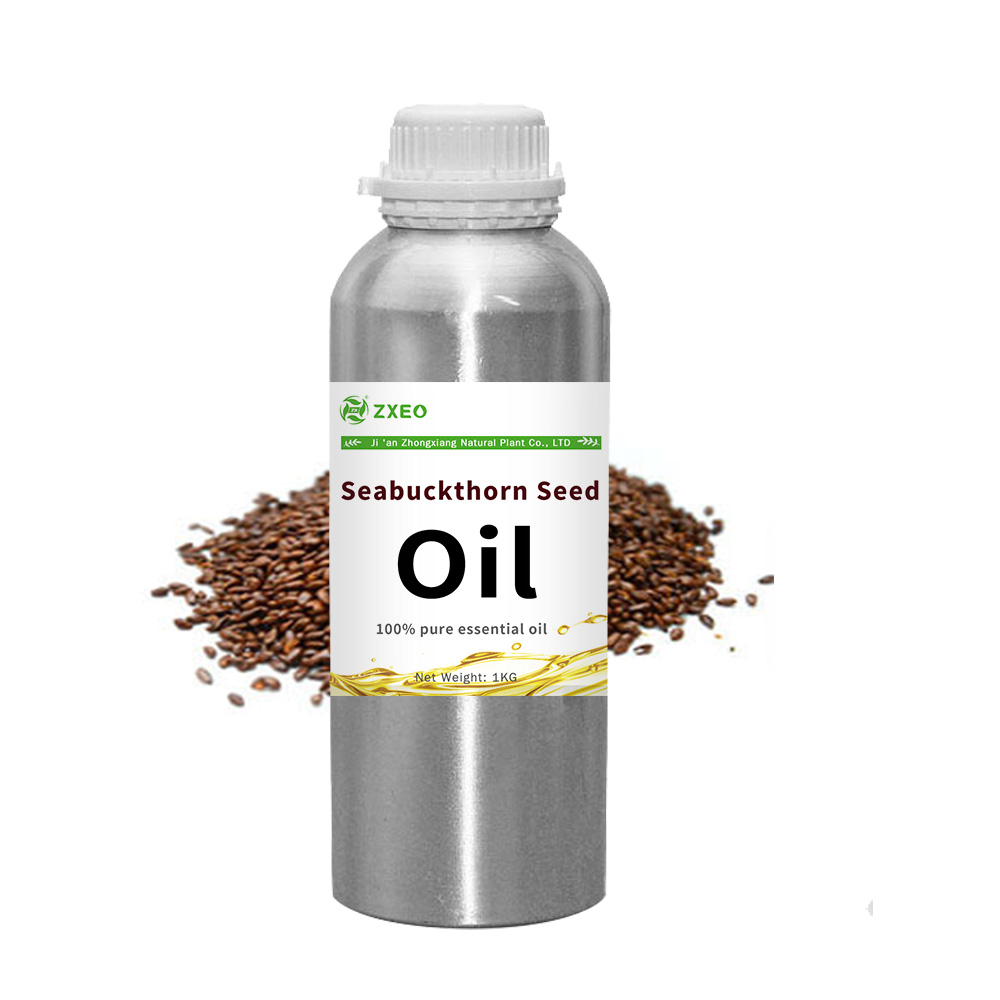
Top Quality Pure Natural Sea Buckthorn Seed Oil for Anti Aging Beauty
Benefits
Improves Hair Growth
Presence of Vitamin E in our organic Sea Buckthorn Seed Oil enriches your hair and improves its growth naturally. It also supports scalp health due to the presence of Vitamin A and other nutrients. You can use Sea Buckthorn Seed Oil for hair conditioning.
Heals Sunburns
You can use our pure Sea Buckthorn Seed Oilto heal sunburns. It also proves to be useful in treating frostbites, insect bites, and bedsores. Organic Sea Buckthorn Seed Oil is also used for treating open wounds, cuts, and scrapes.
Protects Skin
Organic Sea Buckthorn Seed Oil protects your skin from UV rays, pollution, dust, and other external toxins. Sea Buckthorn Seed Oil benefits skin and by using it in sunscreens and skin protection creams. It protects your hair from heat and ultraviolet rays.Uses
Massage oil
Sea Buckthorn Seed Oil proves to be excellent for massages because it can help lower the pain associated with bones, joints, and muscles. Massaging Sea Buckthorn Seed Oil on your body regularly will cleanse your skin’s pores and makes it smooth and fluffy.
Mosquitoes Repellent
Sea Buckthorn Seed Oil has already been used in several mosquito repellents. It may prove to be instrumental in driving away pests and insects from your home. For that, diffuse natural Sea Buckthorn Seed Oil first and then let its strong odor do its job.
Hair Care Products
For preventing hair loss, you can add a few drops of our natural Sea Buckthorn Seed Oil to your shampoo. The vitamins present in Sea Buckthorn Seed Oil will restore the natural elasticity of your hair and prevent it from breaking.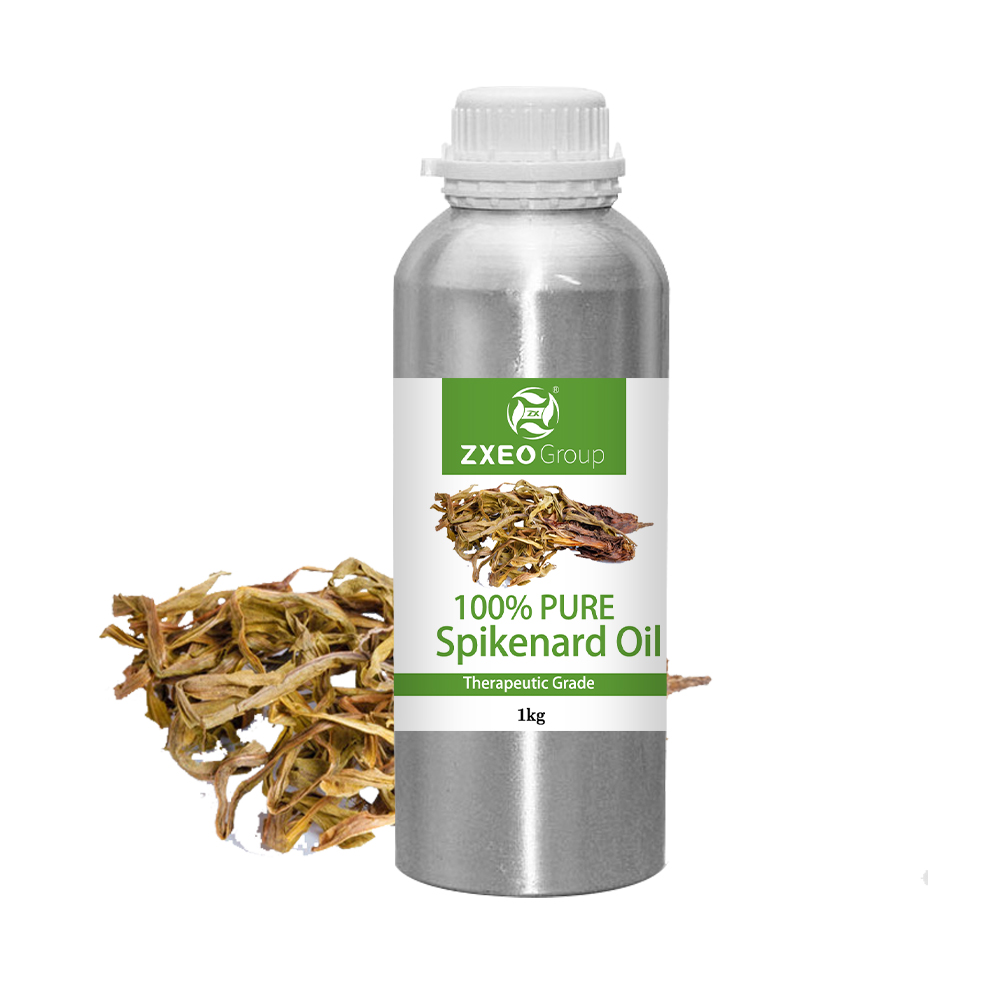
High quality wholesale spikenard essential oil private label spikenard hair oil
Spikenard essential oil can be applied topically to help promote calm or relaxing feelings. When you want to experience the calming benefits of this oil, apply one or two drops to the temples or back of the neck. Before applying Spikenard to the skin, consider diluting the oil with doTERRA Fractionated Coconut Oil to help minimize skin sensitivity.
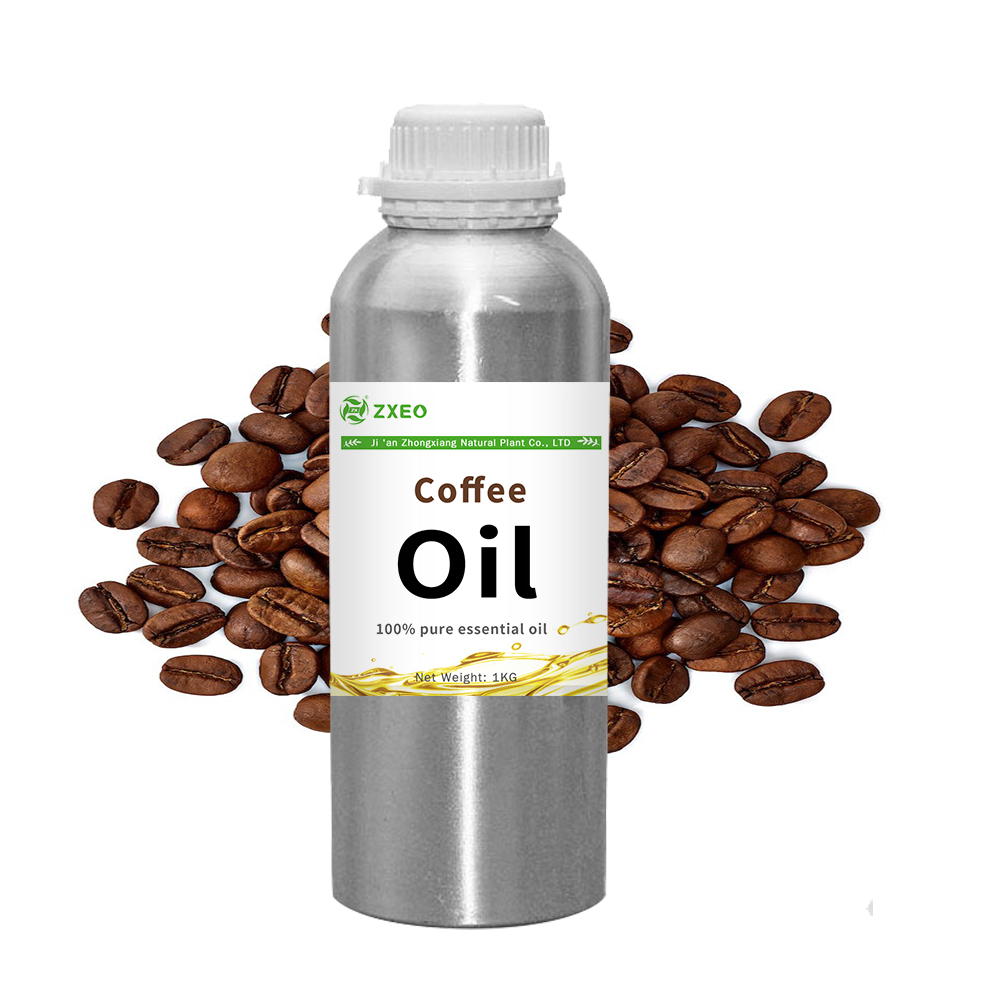
Pure Natural Aromatherapy Coffee Oil for Diffuser Massage Skin Care
Benefits
Improves Respiratory Health
Inhaling coffee essential oil can help to soothe inflammation in the respiratory tracts and prevent infections in that part of the body.May Increase Appetite
The fragrance of this oil alone may be enough to impact the limbic system of the body, stimulating feelings of hunger, which is important for people who are recovering from extended illness, surgery, or injury, as well as those suffering from eating disorders or malnutrition.May Help Reduce Stress & Anxiety
For reducing stress, improving mood, and preventing depression, many people turn to the relaxing properties of coffee essential oil. Diffusing this rich and warm aroma throughout your home can provide a general feeling of peace and calm.Uses
Coffee oil for skin has shown an increase in anti-aging properties. It makes the skin look radiant and youthful.
The application of green coffee oil deeply moisturizes the skin with quick absorption. It is rich in essential fatty acids and has an herbaceous aroma. It is useful for dry and cracked skin, lip care, and damaged and brittle hair.
Who does not like brighter eyes? Coffee oil can help soothe your puffy eyes and add moisture to prevent them from dryness.
Using coffee oil routinely can help calm your acne through anti-inflammatory properties.- English
- French
- German
- Portuguese
- Spanish
- Russian
- Japanese
- Korean
- Arabic
- Irish
- Greek
- Turkish
- Italian
- Danish
- Romanian
- Indonesian
- Czech
- Afrikaans
- Swedish
- Polish
- Basque
- Catalan
- Esperanto
- Hindi
- Lao
- Albanian
- Amharic
- Armenian
- Azerbaijani
- Belarusian
- Bengali
- Bosnian
- Bulgarian
- Cebuano
- Chichewa
- Corsican
- Croatian
- Dutch
- Estonian
- Filipino
- Finnish
- Frisian
- Galician
- Georgian
- Gujarati
- Haitian
- Hausa
- Hawaiian
- Hebrew
- Hmong
- Hungarian
- Icelandic
- Igbo
- Javanese
- Kannada
- Kazakh
- Khmer
- Kurdish
- Kyrgyz
- Latin
- Latvian
- Lithuanian
- Luxembou..
- Macedonian
- Malagasy
- Malay
- Malayalam
- Maltese
- Maori
- Marathi
- Mongolian
- Burmese
- Nepali
- Norwegian
- Pashto
- Persian
- Punjabi
- Serbian
- Sesotho
- Sinhala
- Slovak
- Slovenian
- Somali
- Samoan
- Scots Gaelic
- Shona
- Sindhi
- Sundanese
- Swahili
- Tajik
- Tamil
- Telugu
- Thai
- Ukrainian
- Urdu
- Uzbek
- Vietnamese
- Welsh
- Xhosa
- Yiddish
- Yoruba
- Zulu
- Kinyarwanda
- Tatar
- Oriya
- Turkmen
- Uyghur

